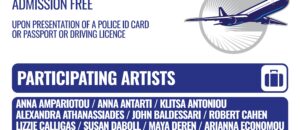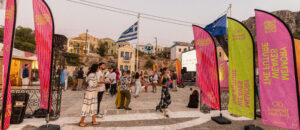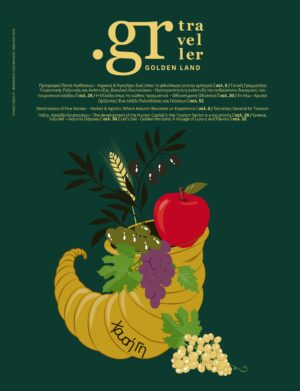“[The Greeks] … relied on the Christian religion and the deep-rooted remnants of the Creed of Ancient Greece to survive. These elements constituted the historical continuation of the Greeks. Elements that are […] alive in the customs and traditions […].
The heritage between the centuries.”
Dora Stratou
Karpathos, with its beautiful little villages perched on the island’s mountains, its picturesque little houses and narrow lace-lined streets, its wooden carvings and textiles, gives its own unique colour to the Christmas season.
We remember times when the Carpathian housewives prepared a lot of goodies and treats, opening their houses for the wishes, carols and the traditional opening of the year to make the year go well.
On Christmas Eve, New Year’s Eve, New Year’s Eve, Christmas Eve and Agiannos, those who had someone to celebrate, Christos, Manolis, Vasilis, Yannis or Fotis, opened their houses and the whole village joined in the celebration.
They made various traditional delicacies, such as dolma-dakia, splenanderas, stifado, kapama and all sorts of delicacies, sweet and savoury to treat the guests along with sweet and sour Karpathian wine.
From early on, groups of men would gather in the café to “get in the mood”, that is, to get in the mood, and then, accompanied by musical instruments, songs and improvised mantinades, they would pass by every house that was celebrating for the blessings and at the last one they went to they would set up a dance. Similarly, groups of women went from house to house to make wishes.
Children “poured out” into the streets to sing carols, with the New Year’s carols having something to say for the homeless:
“My friends if you have children
missing in foreign lands
away your spent
Tonight they’ll be sad
they remember their mommy
their little hearts are depressed.
I hope you see them
as you wish”
On the first day of the year, a young child would usually be given something in gold. He brought a clean and white stone that symbolized rooting, i.e. stability in a place and water from the fountain, with which they sprinkled the courtyards and every corner of the house like holy water for good luck.
They were kneading the Christmas pies, which in Karpathos were not one for all but individual ones that were given to the people and on them they were stamped with the Byzantine double-headed eagle.
On Christmas, they made round buns sprinkled with sesame, black seed and cumin. The same dough was used to make Sympilakia, shaped like a medi-moon and filled with raisins, ground almonds and walnuts and decorated with pieces of dough. They used them to fill baskets and treat the priest who came by with his holy water to bless the houses.
They did not forget, however, to bless their animals, giving them to eat the Vouvopita, which was read by the priest in the church on the day of the Lights.
Kaniskia – the trays with the famous sweets of the Carpathian women – were not missing from any home. Filled with koo-rampies, melomakarona with toasted sesame, karpa-thiotiko baklava, wheat houses with biscuit dough, filled with staka and dry almond.
We would like to thank Mrs Marigoula Kritsiotou from Karpathos, with significant work in dance folklore and local folklore, President of the Athens Section of the International Dance Council, Athens Section CID-UNESCO and collaborator of the Dora Stratou Dance Theatre.

















